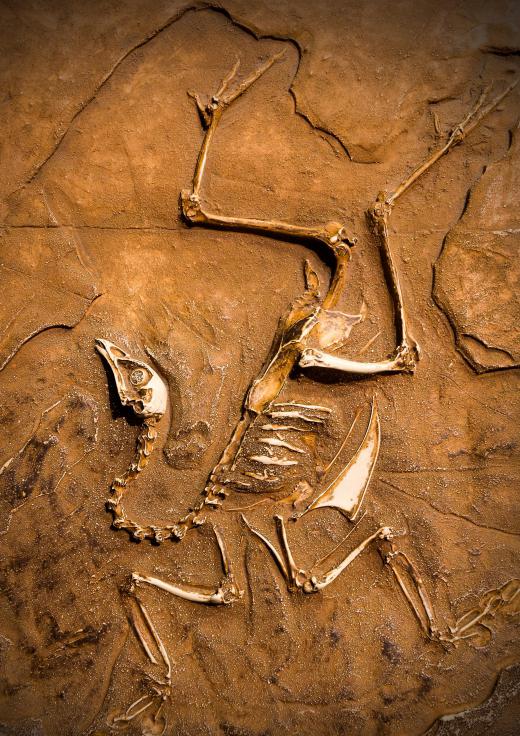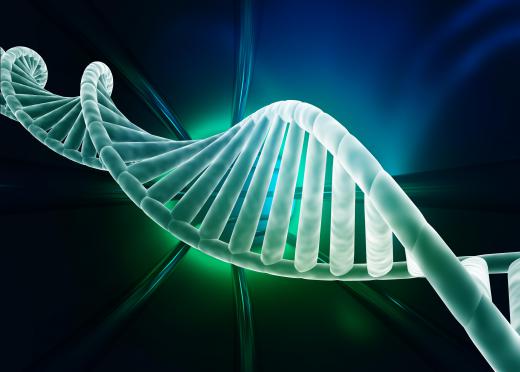What is a Genome?
 Dee Saale
Dee Saale
A genome is defined as all the deoxyribonucleic acid (DNA) that is inside a cell. This includes the DNA in the mitochondria and the chromosomes inside the nucleus of the cell. The DNA transmits instructions to build and maintain the cells that comprise each person. The complete set of instructions is called the genome.
Many people wonder about the purpose of the genome. It contains 46 bundles of DNA called chromosomes – 23 from the person’s mother and 23 from the person’s father. The chromosomes give the instruction that allow a single cell develop from an embryo to an adult with over 100 trillion cells. The DNA also instructs cells how to respond to various stimuli throughout the life of the person, such as how to respond to germs, pollutants, and foods. The DNA forms a twisted double-helix that is comprised of about 3 billion pairs of nucleotides - adenosine, cytosine, thymine, and guanine.

The four nucleotides that form DNA make each person’s genome unique. In addition, the way the nucleotides are strung together makes specific genes and tells the cell how to make certain proteins. Thousands and thousands of proteins are required to build a human and each genome contains approximately 20,500 genes.
The Human Genome Project was an international research project. The goal was to sequence and map out all the genes in the human body. It was completed in 2003 and gave researchers the chance to look at the complete map for what it takes to build a human being, from a genetic standpoint. There are a few small gaps; however, until researchers can invent newer technologies, those gaps will remain blank.

New research projects are constantly in the works regarding the genome. Scientists are now excited over comparative genomics. Comparative genomics compared the genome sequences of several different organisms, such as humans, mice, yeast, and monkeys. By comparing the human genome with genomes from other species, researchers home to identify both differences and similarities. The goal is to help researchers learn more about how human genes work and thereby fight human diseases.

As with many scientific research projects, the study of the genome can cause raise some moral questions. As researchers learn more about evolution from the study of the human, it may affect views of gender and race. It also may lend to new factors to consider regarding identity and what it means to be human and raise social, moral, psychological, and ethical question for both present and future generations.
AS FEATURED ON:
AS FEATURED ON:













Discussion Comments
@ElizaBennett - The project did finish ahead of schedule, but I'm not sure if that was because there were fewer genes and/or just because the technology improved, etc. and they made better progress than expected.
Another surprised that turned up as scientists worked on the complete genome sequence of various species is that we are not as closely related to other primates as was thought. For instance, they thought we shared 98.5% percent of our DNA with chimps, but it turned out to be more like ninety-five percent. That may not sound like a big difference, but apparently it was surprisingly significant to scientists.
Didn't I read that the genome analysis project was finished a few years ahead of schedules because humans turned out not to have as many genes as scientists thought?
The article is properly more interested in the chromosomes, but mitochondrial DNA all comes from the mother. It's because the sperm cell just contributes its chromosomes and then goes away, I guess, while the egg cell will provide the basis for the embryo as it divides.
The weird thing about that is if you think about cloning, which involves removing the nucleus from an unfertilized egg and replacing it with the nucleus of a person's somatic cell (i.e., a cell with all 46 chromosomes instead of just 23). Then, you would have the nuclear DNA from one person, and the mitochondrial DNA from a different one! So the clone would actually not be 100% identical, as the mitochrondrial DNA would be different.
Amazingly, it is back to basics!
Post your comments